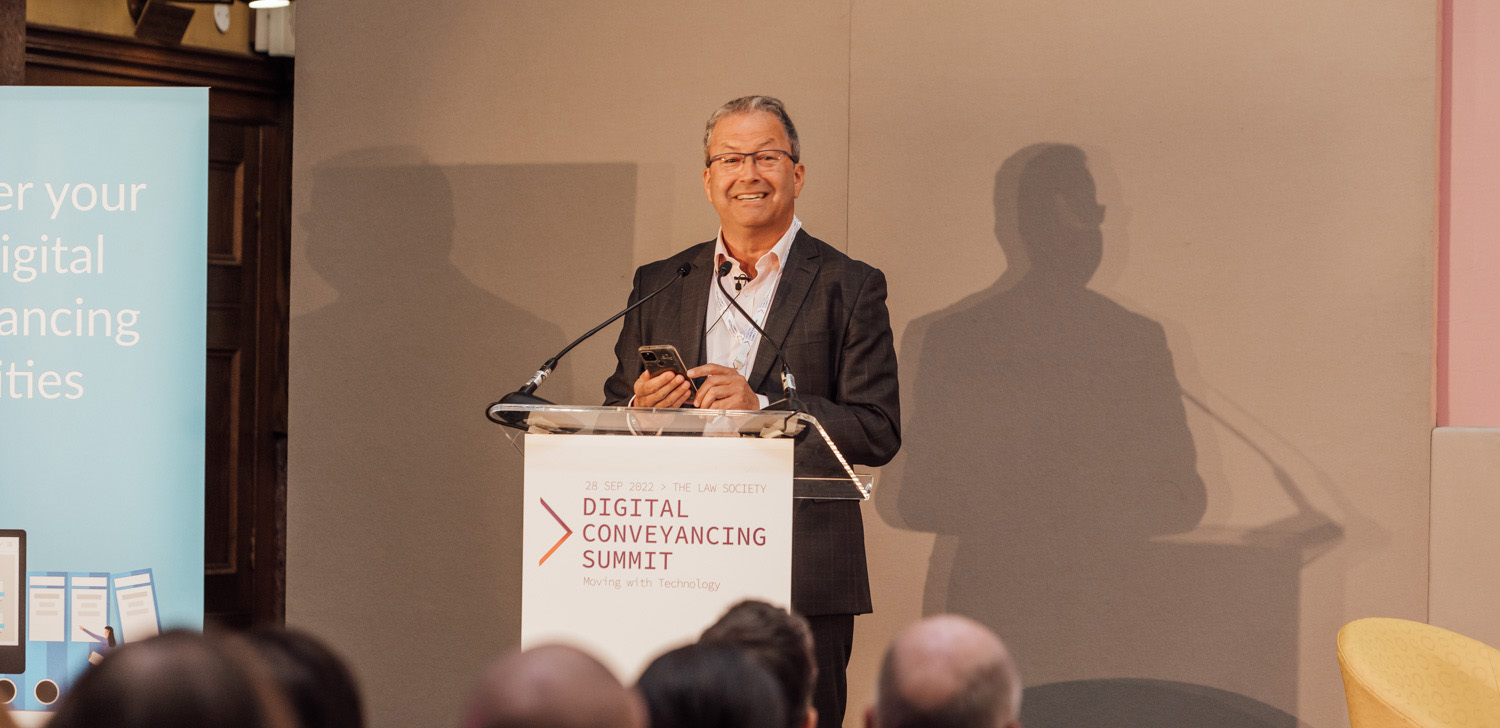Peter Ambrose, Managing Director at Guildford-based conveyancing specialist firm, The Partnership, joined us at the Digital Conveyancing Summit in September. Bringing his regular Today’s Conveyancer column ‘Confessions of Cyber Conveyancing’ to life on stage, he debunked some of the biggest myths surrounding the adoption of legal tech. Now, he is sharing sage advice on how to overcome some of the challenges law firms face on their path towards digitisation.
I’d been working in software for years but, like the M6, all good things had to come to an end. I wanted to make a difference for the house buying public, so in 2009, I created one of the first alternative business structures (ABS). I knew people needed lawyers to move house but given the choice, they would rather not use them. I wanted to change that opinion.
I knew that the business had to be technology first; our software had to be web-based so agents and clients could access case information, 100% paperless, and run by people who knew what they were talking about.
That last item was critical – I believed that only experienced property lawyers fully understand the risks involved with conveyancing. This has been proven to be the case as firms without that solid leadership stagnate because they think residential property is a tick-box exercise.
15 years later, with nearly 100 employees, my company is a respected thought leader in the use of technology in conveyancing. While I know that implementing technology is high on most law firm owners’ agenda, we’ve learned painful lessons on the way, and I wanted to share some ideas about how to get to digital.

1. Cancel your DX account
Let’s start with the easiest. Going digital means removing paper, so take steps to stop it at its source. We used to receive emails with documents attached which would then be sent again in the DX the following day. We’d scan the documents, file them, and then the lawyer would realise that they’d already received them.
Cancel the contract and you’ll reduce your paperwork overnight.
2. Scan everything
Lawyers tell us about “paper-light” initiatives, but most involve them having to scan their own documents. This is not good enough. Digitisation is simple; everything must be held electronically. We bought two decent scanners – each cost about £5K but they are vital to the business. If a document arrives, we scan it. If we print a document for signature, we scan it. In short, if it moves, we scan it. Secondly, we allocated the responsibility of scanning to a specific team and never left it up to individuals to do it themselves.
3. Be scared about ransomware
We used to store our emails and documents on our local servers – about 60m of them, because I thought it was fast and safe. We had backups, backups of backups, and cloud-based backups, but deep-down I knew it didn’t protect against ransomware. Every night, I would worry about a ransomware attack, because if it had happened, we would have been out of business. I put off moving to the cloud for years. That was a huge risk that no-one should take.
Last year, we moved our email to Office365 and all our documents to the cloud – it was not cheap, but it removed the risk of ransomware overnight. Everyone should do this - no argument.

4. Power failures happen
When you move to a 100% digital offering, it’s easy to forget the importance of electricity. With offices in central Guildford and central London, I took regular power for granted – we’d never had an outage since starting the business.
Earlier this year, we had two failures – one in each office.
In our Guildford office we had uninterruptable power supplies on the servers, so they protected our access to the internet, but our switches were blown out. We only had one spare so only half the office could work. When the power came on, we were unable to power up the workstations because they overloaded the circuits.
In London when the power failed the very next week, we didn’t have protection on our firewalls, and when they came back up, they had been reset to factory default, so we had no internet access. I sent everyone home but they couldn’t even work remotely as the connection was down.
The lesson we learned was that uninterruptable power supplies need to be on every piece of central kit, including switches, routers, servers and firewalls.
5. Have good people around you
When you deploy a technology solution, things will go wrong, and you need the right people on your side to fix them. You cannot predict what will happen or when, but make sure you have access to available technicians who can act really fast and put things right.
Finally, print recovery procedures and make sure everyone knows where to find them. There’s nothing more frustrating than realising that the vital passwords and logins that you need are stored in a secure document on your server that you can’t access.
Final thoughts
Technology is a cruel mistress – make sure you treat it with the respect that it deserves, and remember, hope is not a strategy.
For more insight from those who have learned from the journey toward digital conveyancing, catch up with our on-demand sessions from the inaugural Digital Conveyancing Summit.




About the author
Peter Ambrose
Peter Ambrose is the founder of The Partnership, with the aim of changing the approach to conveyancing from within. Having established the company as a highly respected brand, he has also gained a reputation as a direct and highly informed commentator in the conveyancing industry.